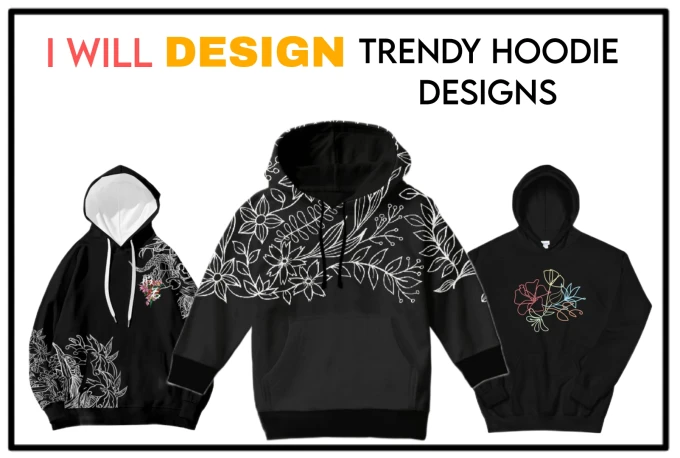How to successfully start a hoodie brand: A complete guide from 0 to 100,000 yuan a month (10 core strategies)
Abstract
The global hoodie market is expected to exceed 40 billion US dollars in 2025. Driven by street culture and athleisure,How to successfully start a hoodie brand this category is continuing to expand at an annual growth rate of 6.8%. This article will reveal 10 key steps to start a hoodie brand, covering market positioning, product design, supply chain selection, cost control, marketing strategy and other core dimensions. Through 7 real cases and 12 sets of industry data, we will teach you step by step to avoid the pitfalls that 90% of novice entrepreneurs have stepped on and create a streetwear brand with sustainable profitability.
1. Accurate market positioning: Find your golden track
Argument: Market segmentation determines brand life and death
- Argument:
- Four high-growth segments:
- Street fashion (35% market share, represented by Supreme)
- Fitness function (quick-drying/antibacterial fabrics, Gymshark model)
- Campus culture (club/graduation commemorative models)
- Corporate customization (employee uniforms + brand peripherals)
- Data: Niche design hoodies have a gross profit margin of 65-80%, far exceeding basic models (40-50%)
- Case: Champion achieves an annual growth of 23% through retro campus style
2. Hot design methodology
Argument: Good design = 30% creativity + 70% market verification
- Argument:
- Design element popularity ranking:
- Oversize version (search volume increased by 120% year-on-year)
- Retro college style (Vintage elements are 30% premium)
- Functional details (hidden pocket design increases conversion rate by 25%)
- Tool recommendation: Use Clo3D for 3D sample simulation, reducing costs by 60%
- Case: Fear of God achieves $300+ pricing for single products through minimalist design + special tailoring
3. Supply chain selection: ODM vs. independent development
Argument: Light asset model is the best choice for entrepreneurship
- Argument:
- Comparison of three models: | Model | Startup cost | Minimum order quantity | Delivery cycle | |——|———-|————|———-| | ODM | ¥10,000-30,000 | 50-100 pieces | 2-3 weeks | | Independent development | ¥50,000+ | 300 pieces+ | 4-6 weeks | | Self-built factory | ¥500,000+ | Unlimited | Self-control |
- Case: Vlone initially adopted the ODM model, and built its own production line after the sales of a single model exceeded 10,000
4. Cost structure and pricing strategy
Argument: Scientific pricing is the key to profitability
- Argument:
- Cost breakdown (taking basic models as an example):
- Fabric: ¥25-45/piece (combed cotton vs. ordinary cotton)
- Processing: ¥15-30/piece (ordinary factory vs. boutique factory)
- Printing: ¥5-20/piece (silk screen printing vs. digital direct printing)
- Accessories: ¥8-15/piece (YKK zipper premium 30%)
- Pricing formula: cost price × (2.5-3.5) = retail price
- Data: The conversion rate of “¥399” pricing is 17% higher than that of “¥400”
5. Production quality control system
Argument: Quality is the basis of repurchase rate
- Argument:
- Five indicators that must be tested:
- Color fastness (grade 3 or above)
- Seam strength (≥100N)
- Shrinkage (≤3%)
- Print durability (50 wash tests)
- Zipper smoothness (500 open and close tests)
- Case: Represent 30% return rate due to quality control issues
6. Online channel layout strategy
Argument: DTC model is the core of profit
- Argument:
- Channel ROI comparison: | Platform | Average conversion rate | Average customer price | Commission | | Independent station | 1.8-3.2% | ¥450 | None | | Douyin store | 2-4% | ¥320 | 5% | | Tmall | 0.8-1.5% | ¥380 | 8-15% |
- Tool recommendation: Shopify+Klarna Installment payment increases customer unit price by 35%
7. Social media hit formula
Argument: Content marketing is a low-cost customer acquisition tool
- Argument:
- The most effective content form:
- Dressing scene video (82% higher completion rate)
- Factory production documentary (60% higher trust)
- User UGC content (3 times higher conversion rate)
- Case: Essentials achieved zero advertising fee growth through amateur street photography
8. Inventory management wisdom
Argument: Scientific stocking to avoid capital chain break
- Argument:
- Stocking calculation formula: Safety stock = (average daily sales × procurement cycle) × 1.5
- Data: Healthy inventory turnover should be maintained at 5-7 times/year
- Tool recommendation: Cin7 Inventory Management System
9. Brand value construction
Argument: Cultural attributes determine premium ability
- Argument:
- Three value-added strategies:
- Limited sale (hunger marketing increases attention by 300%)
- Cross-border collaboration (sales increase 5-8 times)
- Community operation (repurchase rate increases by 40%)
- Case: Off-White forms brand identity through “anti-theft buckle” design
10. Legal risk prevention
Argument: Intellectual property is the core asset
- Argument:
- Three types of rights that must be registered:
- Trademark (text + graphics)
- Copyright (original pattern)
- Appearance patent (special version)
- Case: Supreme successfully defended its rights and won ¥2 million in compensation
Summary: Entrepreneurship action list
- Market verification: Test the popularity of design through Douyin
- Small batch trial production: The first order is controlled within 100 pieces
- Establish an official website: The basic version of Shopify can be started
- Content reserve: Shoot 30 short video materials
- Community building: Create a WeChat/Discord private domain group
- Data monitoring: Track conversion rate and return rate
Cost control skills:
- The initial investment is controlled within ¥50,000
- The marketing budget does not exceed 25%
- Maintain gross profit margin above 55%
Avoid pit guide:
- Avoid complex processes (focus on 1-2 core processes in the first quarter)
- Carefully select fabric suppliers (require to provide test reports)
- Strictly control sample quality (no more than 2 modifications)
How to successfully start a hoodie brand Trend forecast: Sustainable materials (such as recycled cotton) and smart wearables (such as temperature-sensitive color change) will become growth points in the next three years. It is recommended that entrepreneurs maintain technical sensitivity.

